(As of October 20, 2025 • See car/truck rumors).
The serial hybrid “Ramcharger” pickup with a 690 mile capacity has been renamed to REV, the name of the abandoned Ram 1500 EV. This powertrain is apparently being aimed at the Wagoneer, too.
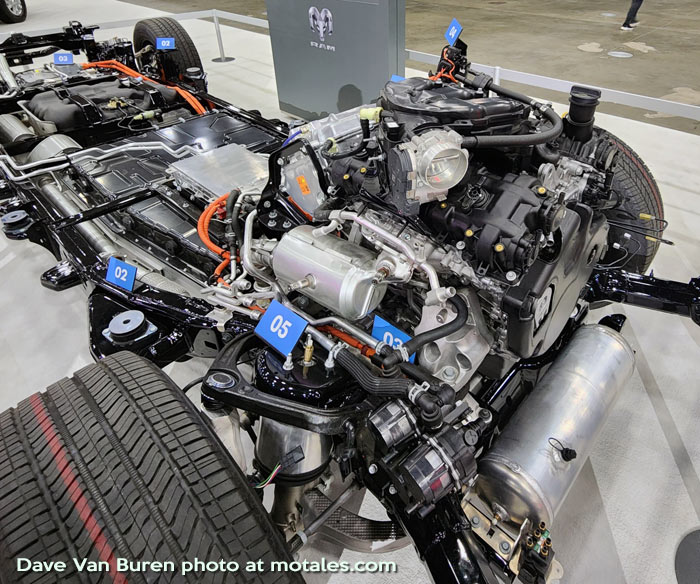
A second generation 4xe system is reportedly nearly finished, but whether it sees the light of day is an open question.
Solid state batteries may improve range and weight in the 2028 cars. It now appears that solid state batteries are still a few years off and may be too expensive for mainstream cars anyway; LFP technology seems to be the way forward for the foreseeable future. Stellantis and Toyota are planning prototype tests of solid state batteries in 2026-27.
Electric cars are likely to be dramatically de-emphasized in the United States, but continue in Europe.
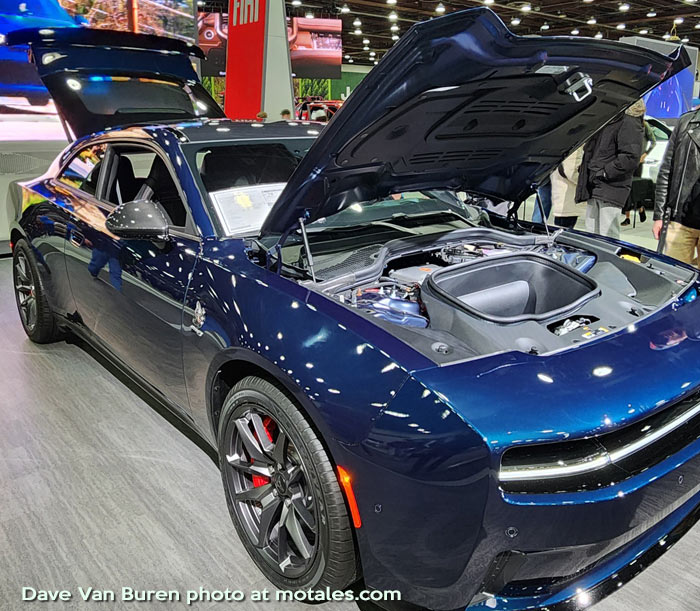
The Ram 1500 REV was to be the battery-electric (BEV) version of the popular pickup—we have the full story on this 14,000-pound-towing serious work truck, with interior and exterior pics, but it has been dropped.
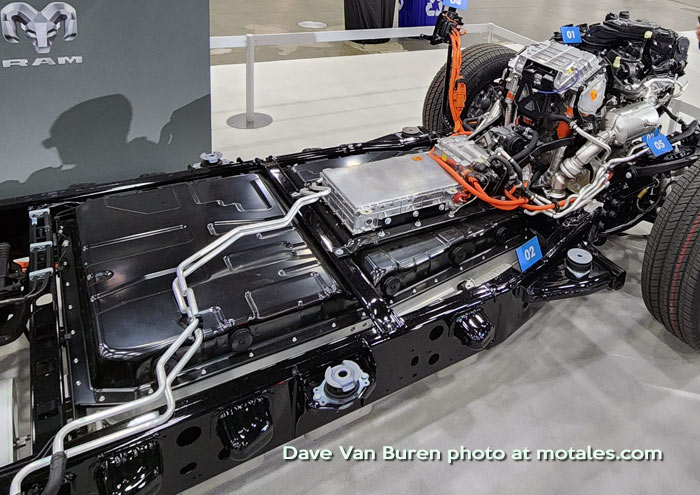
ProMaster has a BEV version but it starts at around $90,000 because it is based on a top-range van.
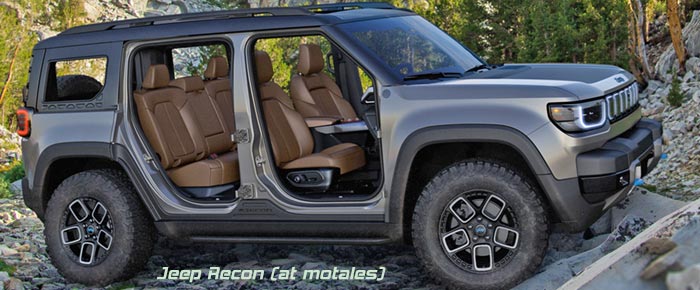
The Wagoneer S is a BEV, the gasoline version is the Cherokee. Recon was to be a battery electric but all bets are off; reportedly, training materials were pulled and the launch has been indefinitely postponed, which suggests that the Recon is being outfitted with an engine.
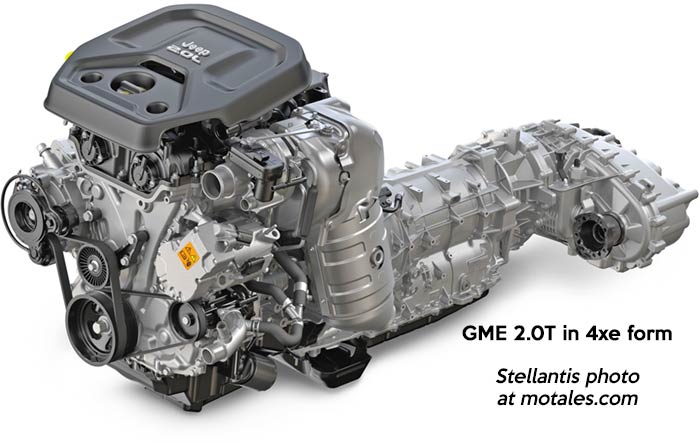
Detail pages at motales: 1.3T GSE; 2.0 GME; 2.0 Hurricane 4; 3.6 Pentastar; Hurricane Six; Peugeot 1.6; 5.7 Hemi V8. For other Hemis and such, see our main engines page.
The power for each new engine is roughly (using the highest numbers available):
| New | HP | Torque |
|---|---|---|
| 1.6TH* | 210 | 235 |
| 3.6 |
310 | ~270 |
| 2.0T |
280 |
295 |
| 2.0 EVO | 300? | ? |
| 2.0TH | 375 |
470 |
| 3.0T SO | 420 | 468 |
| 3.0T HO | 550 | 510+ |
* With motor. See 1.6 page for the engine alone.
Future / upcoming cars, trucks and crossovers (rumors)
Guest insights at Motales: sales, parts, factory
Updated: 300,000-Dart re-recall and many Ford callbacks
Barra mitigates tariffs, sees big GM profits
Copyright © 2021-2025 Zatz LLC • Chrysler / Mopar car stories and history.
YouTube • Editorial Guidelines • Videos